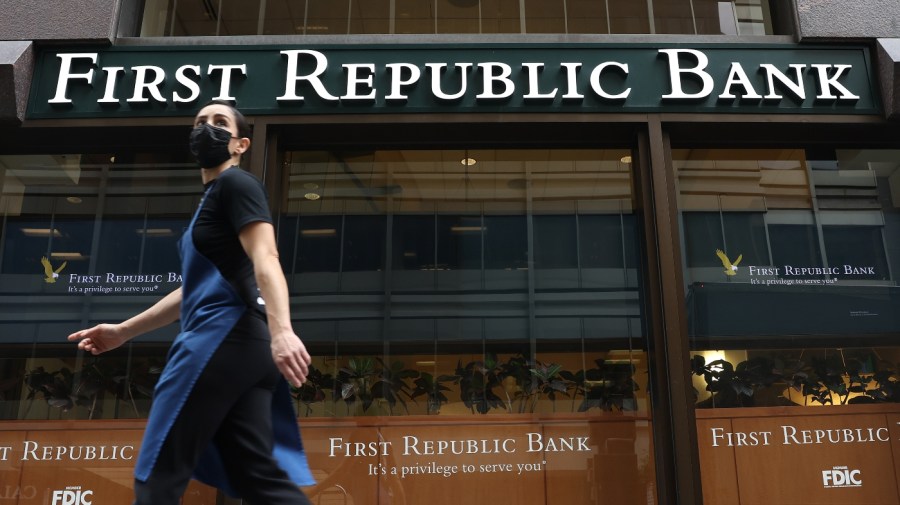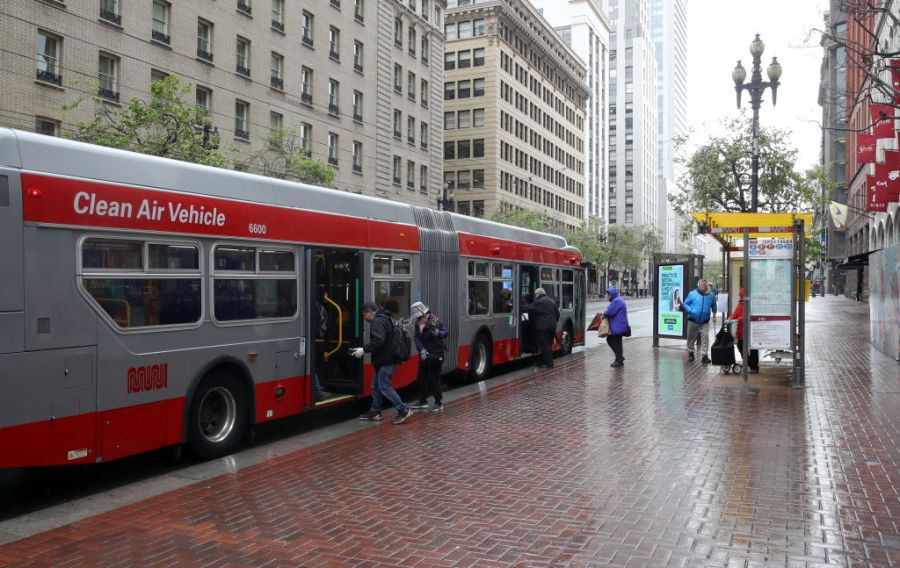4 major risks still facing banks and why you should care
The U.S. financial system is still reeling from the collapse of Silicon Valley Bank (SVB) and Signature Bank, the second- and third-largest bank failures in history.
Despite the turbulence, regulators and bank executives say they don’t foresee a repeat of the 2008 financial crisis — but they’ve cautioned that the banking sector isn’t out of the woods yet.
Banks face huge unrealized losses on long-term investments, the threat of more bank runs and looming defaults in the commercial real estate market. As banks face stress, they may pull back on lending, hurting the economy.
Here are some of the trouble spots the banking sector and market watchers still have on their radars.

US banks face $620 billion in unrealized losses
SVB’s tech and venture capitalist clients pulled their money amid concerns about the bank’s massive unrealized losses on its long-term Treasury bond investments. Outflows forced SVB to sell securities at a loss to raise money, but the bank still wasn’t able to stay solvent.
Banks of all sizes made similar bets on government and mortgage-backed bonds.
While they’re normally a safe investment, these securities lost value when the Federal Reserve aggressively hiked interest rates, driving up the yields on new bonds and making older bonds less attractive.
U.S. banks had a whopping $620 billion in unrealized losses on these kinds of securities at the end of 2022, according to the Federal Deposit Insurance Corporation (FDIC).
Problems on the horizon? Bank failure fallout is far from over, lawmakers say
Many banks might have to sell them at an enormous loss if they were to face liquidity issues.
Analysts have pointed to large unrealized losses at regional banks that saw deposit outflows following the SVB failure. While bigger banks face losses too, it’s a smaller percentage of their assets, so they don’t face the same threat of a bank run.
“It’s not a problem unless your depositors decide it’s a problem and ask you for their money back, which is sort of what happened with Silicon Valley Bank,” said David Sacco, a finance professor at the University of New Haven.
Following the SVB collapse, the Fed created a lending program aimed at enabling banks to fulfill customer withdrawals without having to sell securities. That’s helped lessen the threat of unrealized losses, experts said.

Midsize and regional banks still face bank run threat
Perhaps the most imminent threat facing the banking system is the outflow of funds from midsize and regional banks, which are a key part of the U.S. financial system.
Wealthy depositors moved their funds from these banks to larger institutions over fears of additional bank runs. San Francisco’s First Republic Bank lost around $70 billion in deposits within weeks of SVB’s collapse, prompting large banks to throw the lender a lifeline.
While the FDIC only insures deposits up to $250,000, federal regulators used an exception to insure all deposits at SVB and Signature Bank to boost confidence in the banking system.
Blows to market confidence: Here’s how the debt limit fight could impact the banking crisis
Treasury Secretary Janet Yellen hinted that regulators would take the same step in the event of future bank failures, which slowed the outflow of money from banks with a high percentage of uninsured deposits.
“This banking system is based on confidence,” Sacco said. “Some percentage of all bank assets are illiquid, so that the nature of our banking system is one where if everybody wanted their money back, basically every bank would fail.”
The panic has appeared to ease. Total deposits at U.S. commercial banks reached $17.35 trillion in late March, up from $17.31 trillion a week earlier but still down from $17.62 trillion at the start of the month, according to Federal Reserve data.
Upcoming earnings reports and subsequent stock selloffs could halt that momentum. First Republic Bank will reveal its first-quarter figures on April 24, nearly two weeks later than expected. The bank’s stock is down roughly 90 percent since early March.

“There’s clearly continuing market jitters,” said Karen Petrou, managing partner at research firm Federal Financial Analytics. “If there are surprises in earnings, particularly for some of the regional banks where markets are particularly spooked, that could start another run or market reaction.”
As banks seek to bolster their deposits, they face heightened competition for cash. Rising interest rates are making bonds, money market funds and other investments a more lucrative place for individuals and businesses to store their money.
Regional banks are paying upwards of 5 percent interest on certificates of deposit — where an individual pledges to keep their money in the bank for a fixed period of time — up from less than 1 percent just a few months ago.
US banks hold $3.1 trillion in commercial real estate loans
Smaller banks are particularly exposed to a downturn in the commercial real estate market.
The explosion of remote and hybrid work during the pandemic has left office buildings emptier than they were intended to be, hurting the value of buildings owned by commercial real estate companies that have mortgages with banks.
Roughly two-thirds of areas in the U.S. have seen their office vacancy rates increase compared to pre-pandemic levels, according to the National Association of Realtors.
Is a recession more likely? JPMorgan CEO says banking crisis puts ‘another weight on the scale’ toward recession
Some analysts fear that vacancy rates will only rise as more companies go remote and decline to renew their leases.
Goldman Sachs analysts estimate that U.S. banks held $3.1 trillion in commercial mortgages at the start of the year. Small and regional banks hold around 80 percent of commercial real estate loans, the analysts said.
Default rates are inching up, and $270 billion in commercial mortgages held by banks are set to some due this year according to research firm Trepp.
Because of the Fed’s rate hikes and banks’ heightened worries about the commercial market, loans will need to be refinanced at higher interest rates. If borrowers are unable to refinance and honor their obligations, banks could suffer from a “wave of defaults,” Petrou said.

Mortgage lenders are losing money on loans as credit tightens
Commercial lending by U.S. banks declined by nearly $105 billion in the final two weeks of March, according to Fed data released Friday. The decrease, which was driven primarily by small banks, was the largest on record, Bloomberg reported.
The American Bankers Association’s credit conditions index, released Thursday, plummeted to the lowest level since the early days of the pandemic.
Sayee Srinivasan, the association’s top economist, pointed to “heightened uncertainty and broader economic headwinds.”
Struggles for lending: Mortgage lenders are losing money on loans for the first time in years
“Lenders are responding with cautious and prudent underwriting,” Srinivasan said in a statement.
While a lending slowdown would hurt the profitability of banks, it’s a larger risk to the broader economy that relies on financing to grow and create jobs.
Fed Jerome Powell said last month that officials are closely monitoring the availability of credit when considering whether to continue hiking rates in its effort to cool inflation.
“It could easily have a significant macroeconomic effect, and we would factor that into our policies,” Powell said.
Banks were sometimes self-regulating, so we don’t know what we don’t know
Powell and other federal regulators have said that banking regulations need to be examined after supervisors failed to prevent SVB’s collapse.
SVB and Signature Bank lobbied for a 2018 bill to loosen regulations on midsize banks, which made it so they weren’t subject to stress tests and capital requirements. The Fed opted not to use stricter oversight on midsize banks authorized under the law.
President Biden is also pushing lawmakers to toughen bank regulations to reduce the chance of future bank failures.
Existing rules also make it harder for investors to identify bank risks, some critics say, and banks have often found ways to reclassify losses.
For example, some banks with large unrealized bond losses have used accounting tactics to prevent billions of dollars in losses from appearing on their balance sheet by declaring they’ll hold the securities until they mature. That particular maneuver was dubbed “the switcheroo” and remains under scrutiny from regulators and investors.
Credit Suisse bondholders are exploring legal options after Swiss regulators wiped out around $17 billion in bank bonds, dubbed CoCo or A1 bonds, as part of the bank’s collapse and subsequent sale to UBS last month.
They were invested in high-yielding contingent convertible bonds, which banks created after the 2008 financial crisis to shift risk to investors and prevent government bailouts. These, too, are undergoing scrutiny from local and global regulators alike.
Copyright 2023 Nexstar Media Inc. All rights reserved. This material may not be published, broadcast, rewritten, or redistributed. Regular the hill posts






